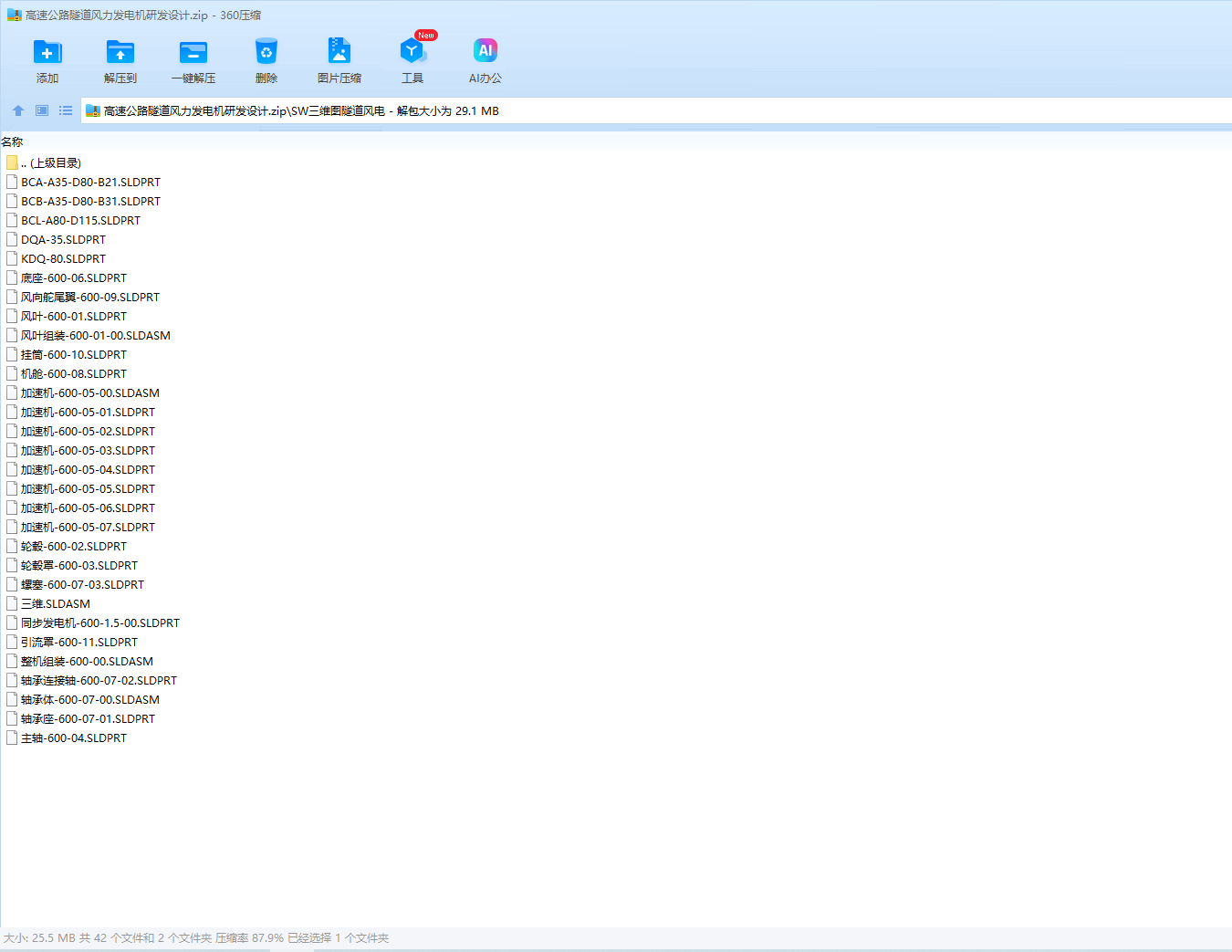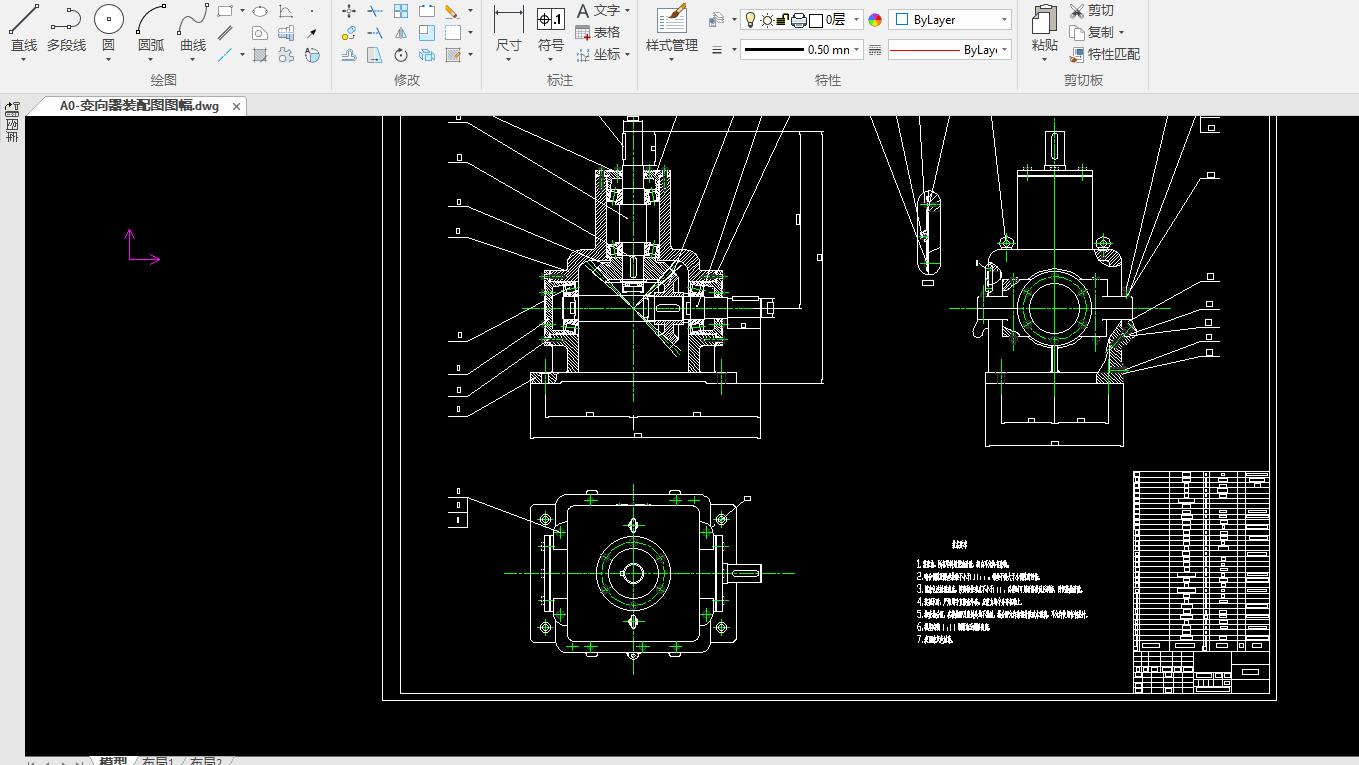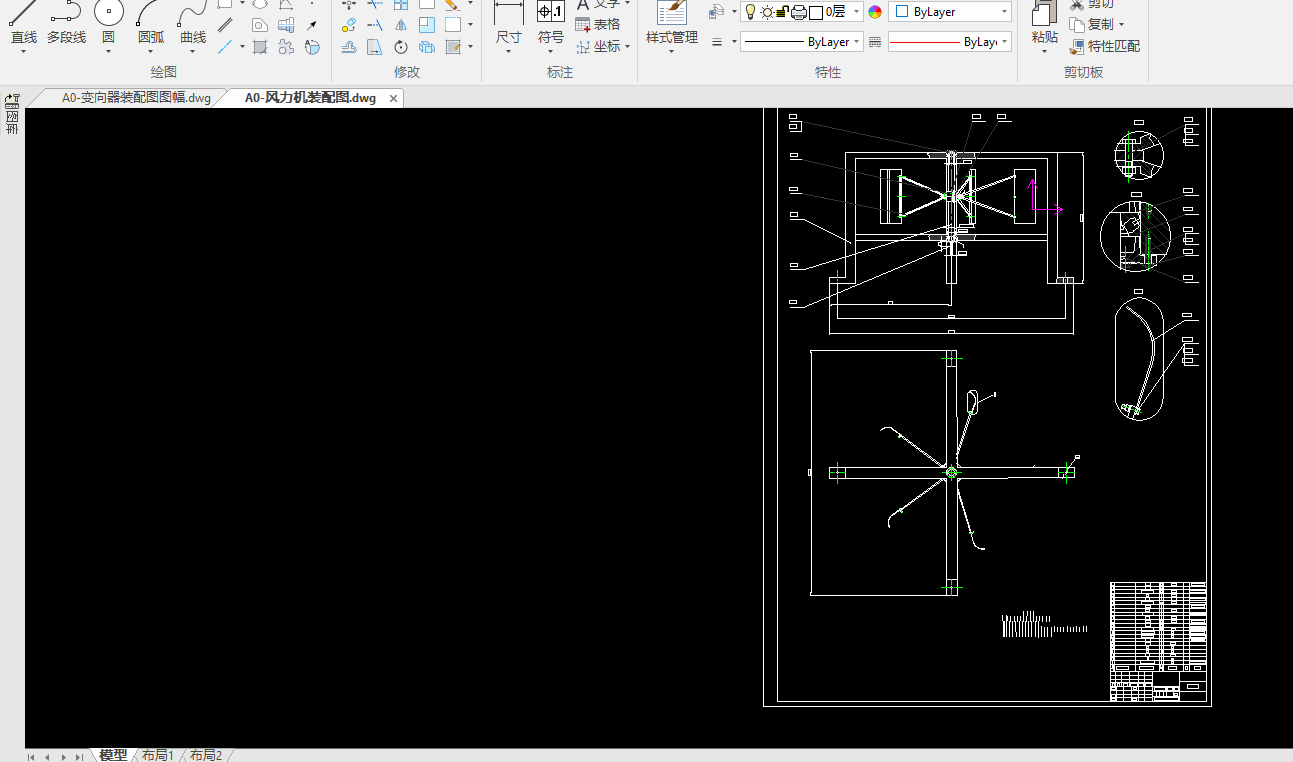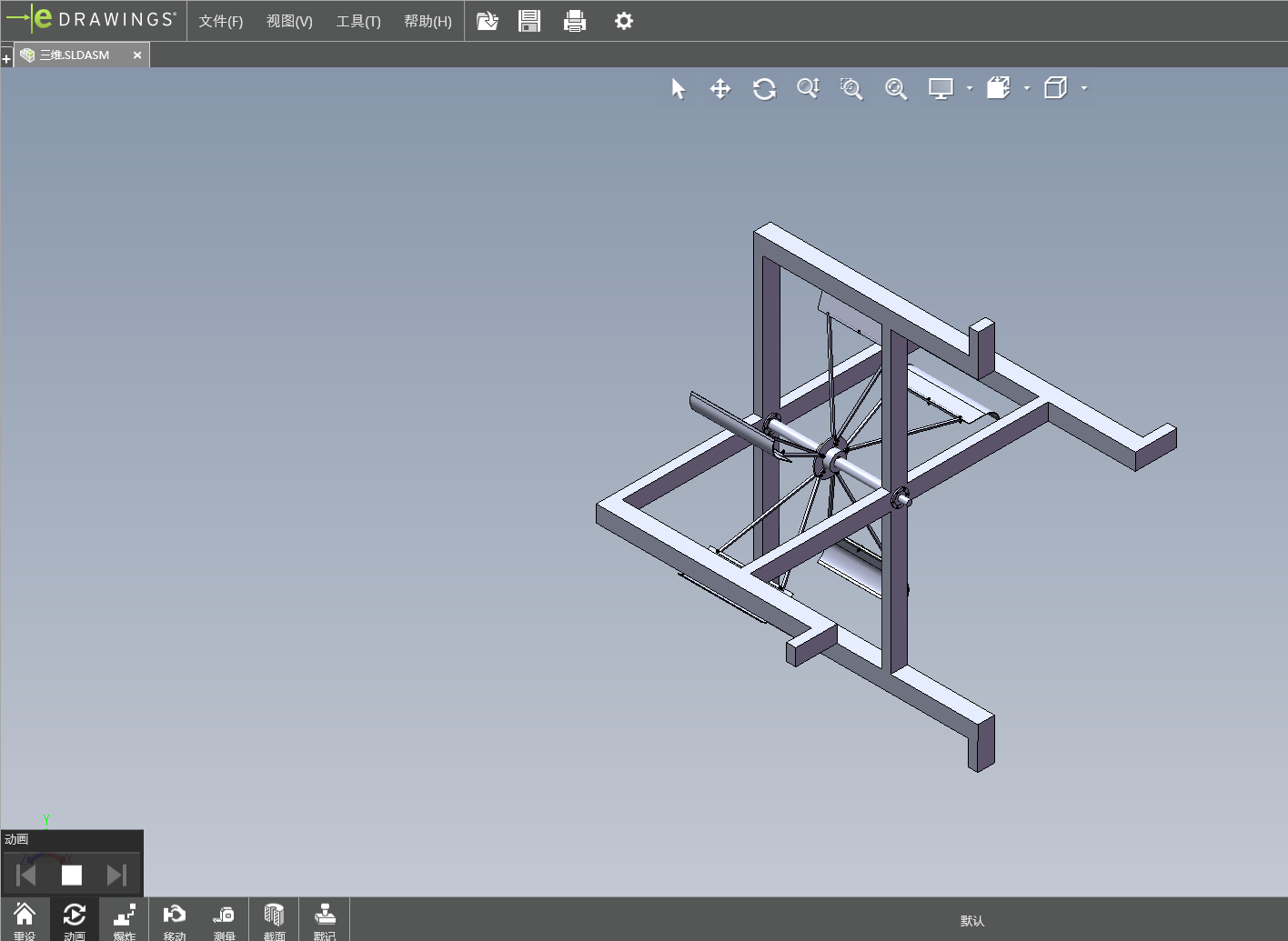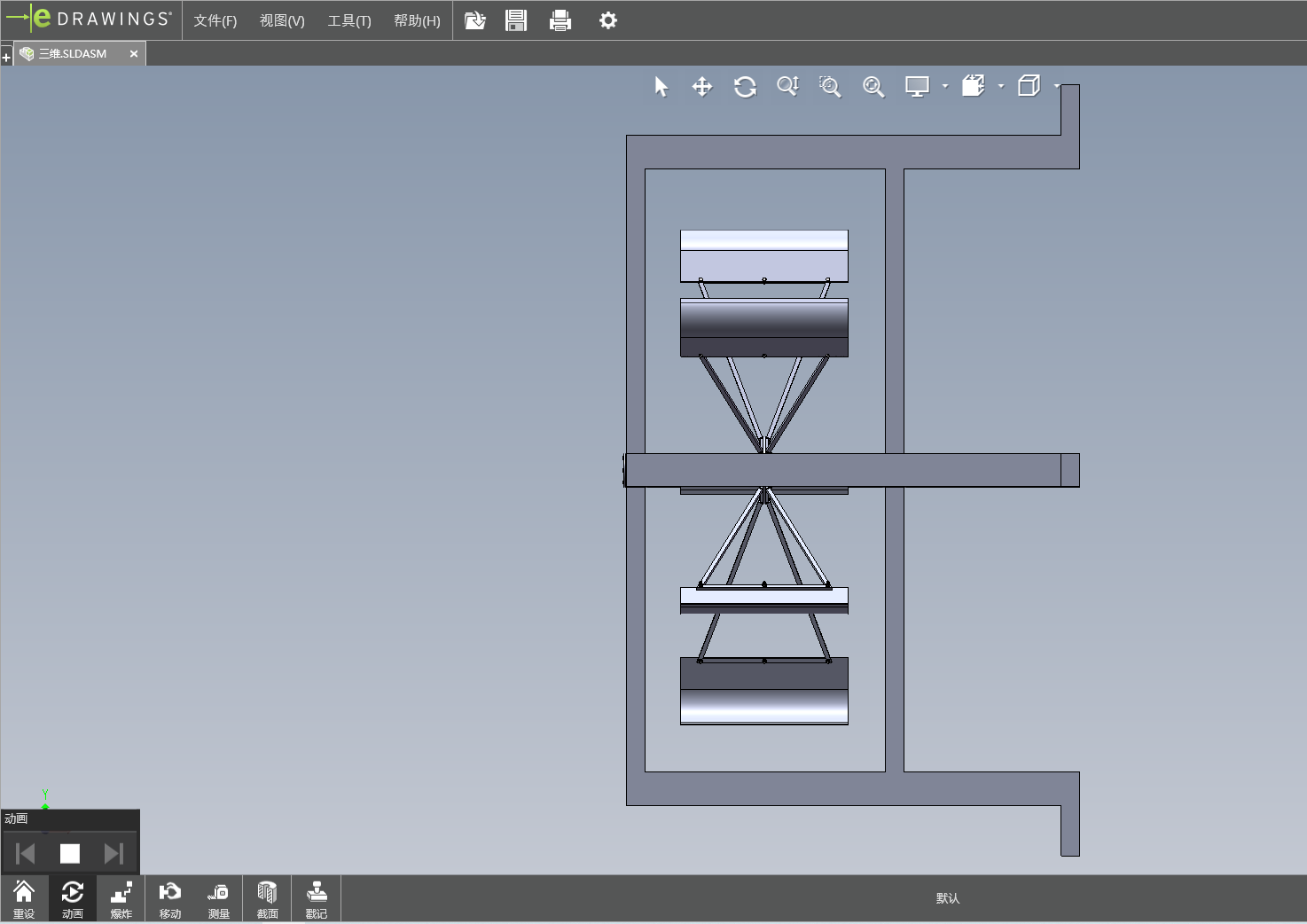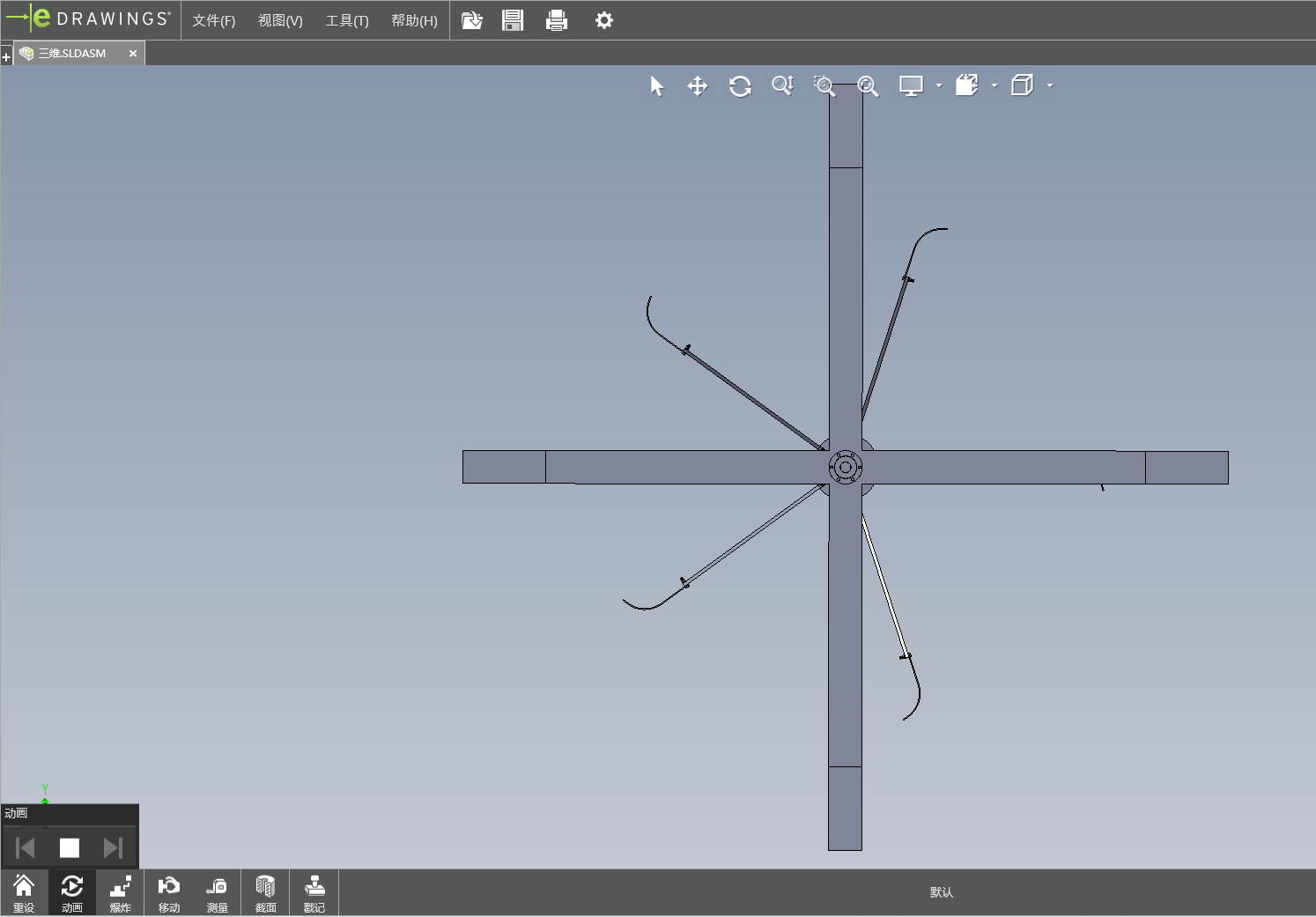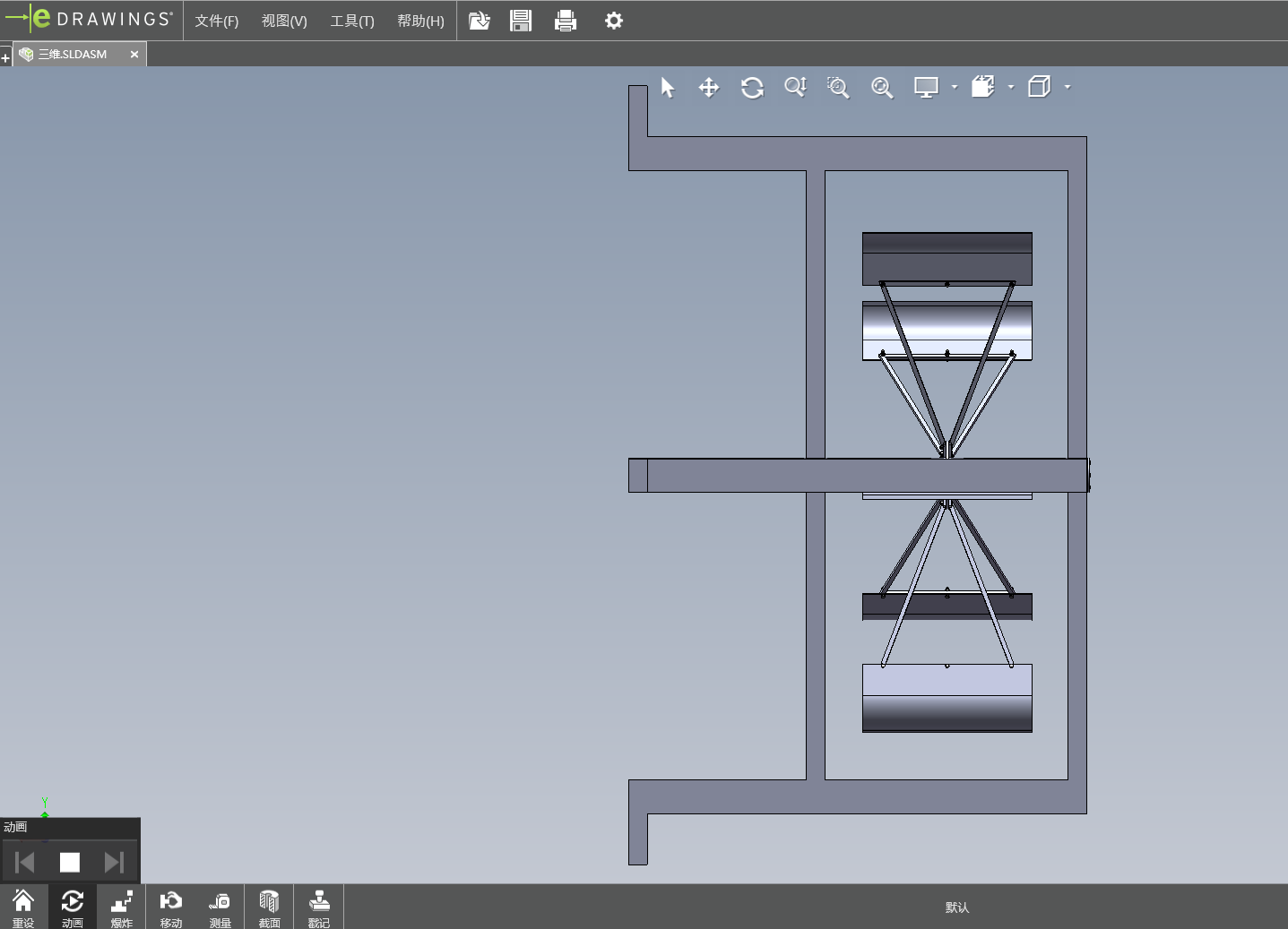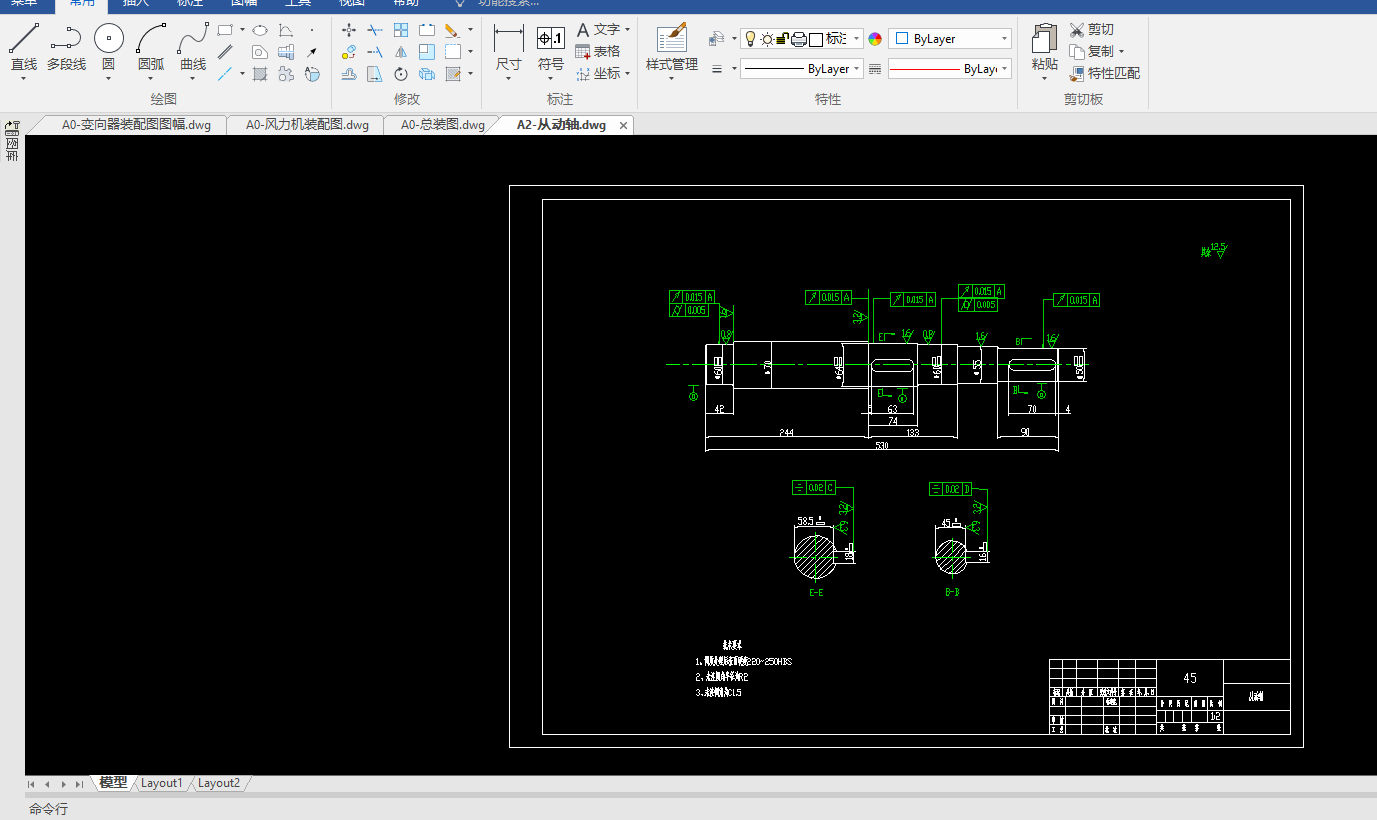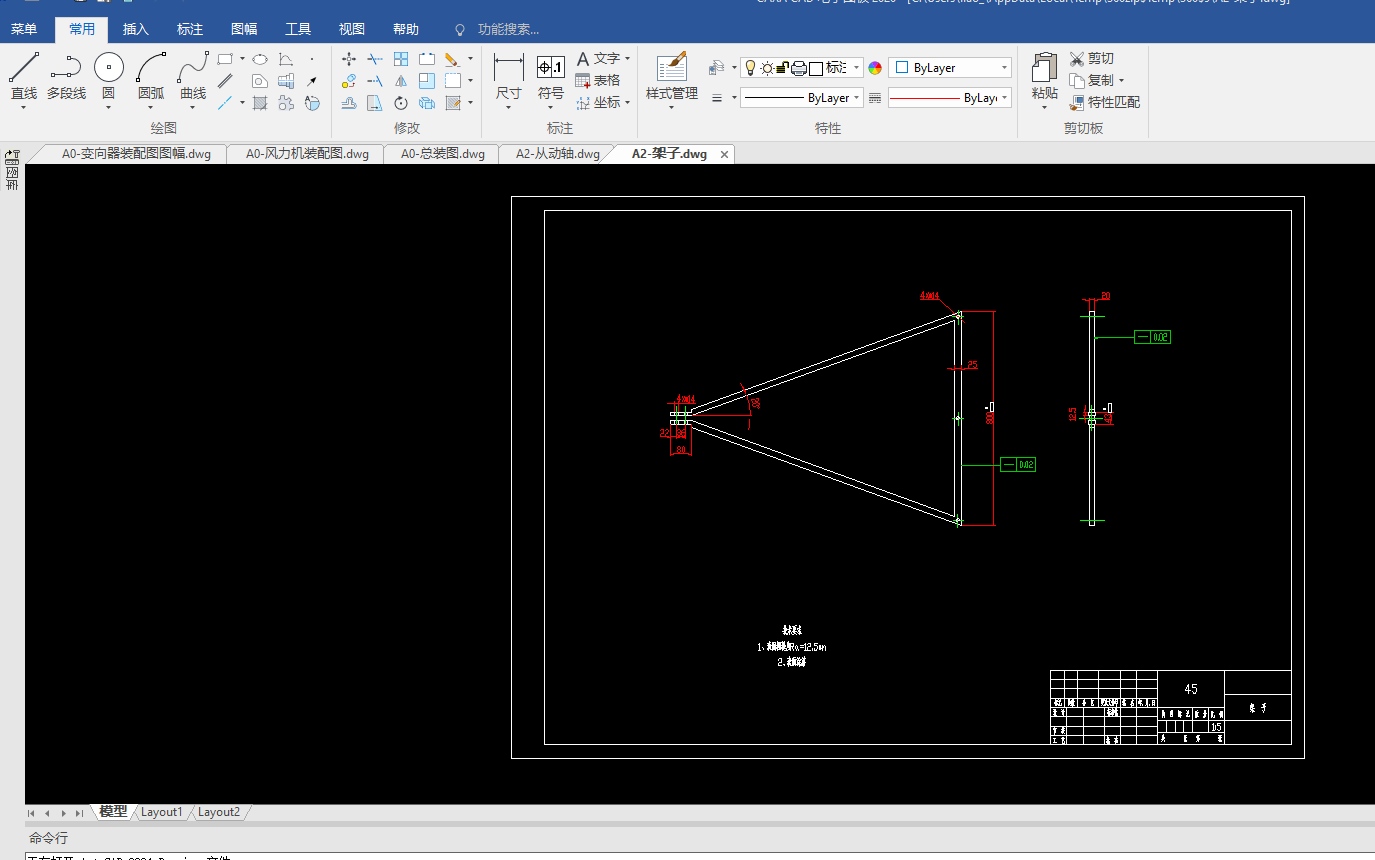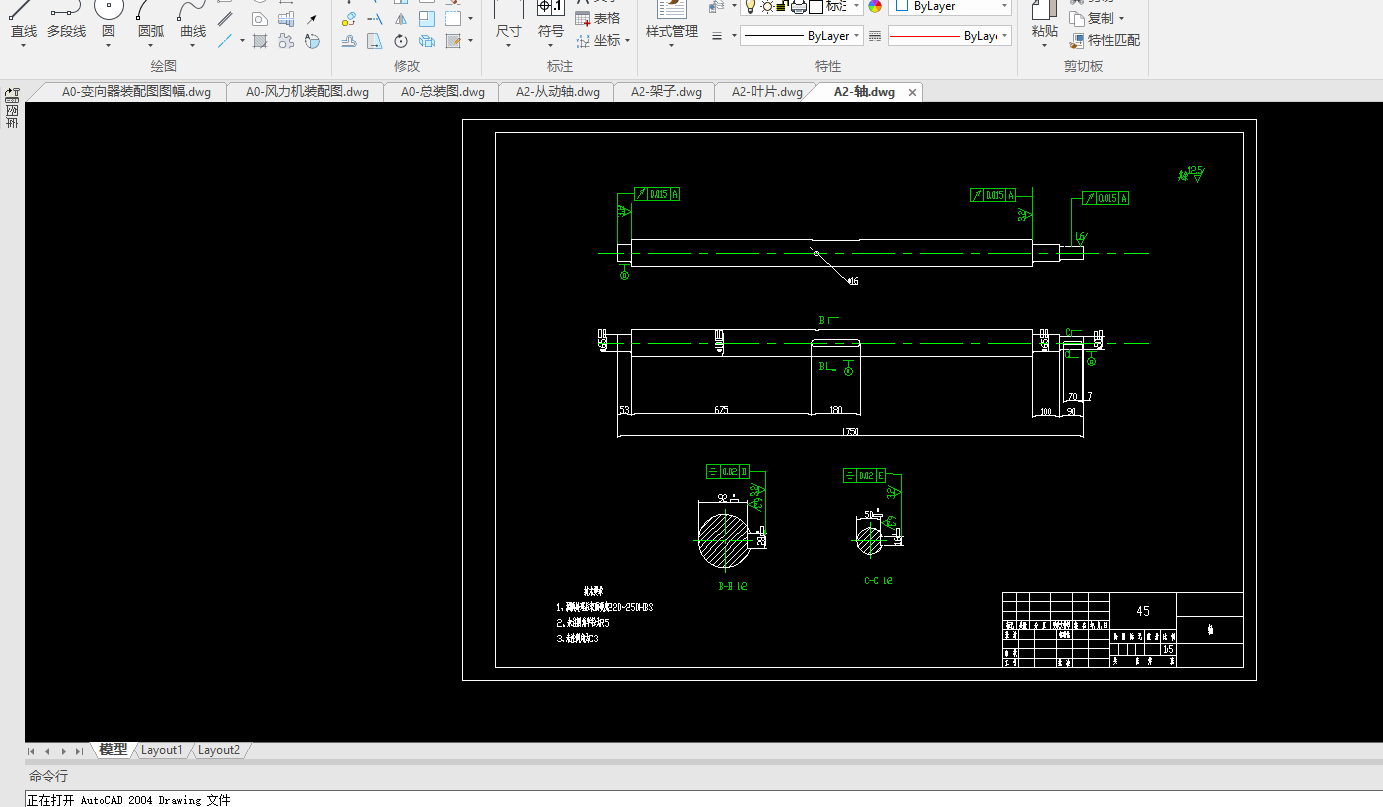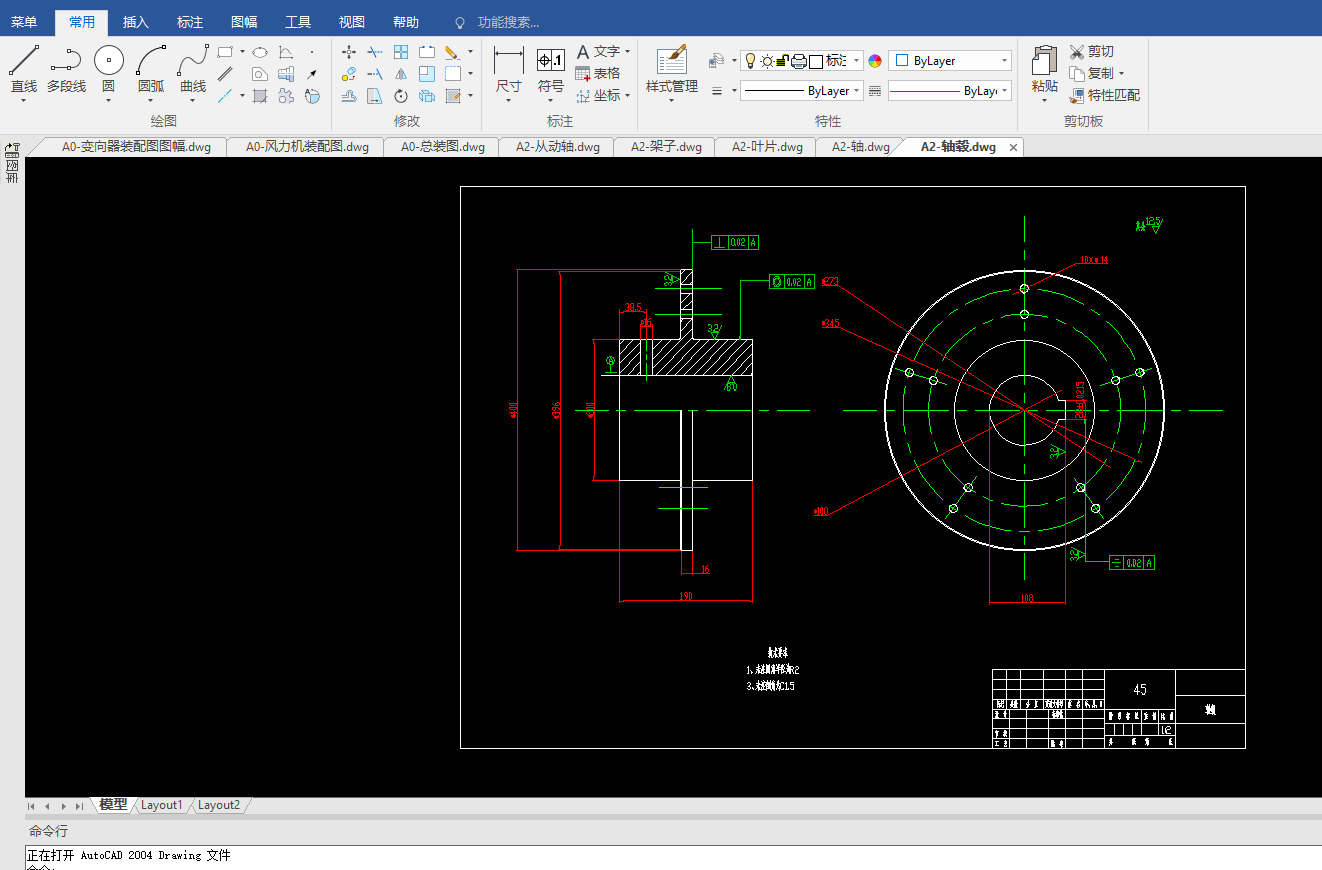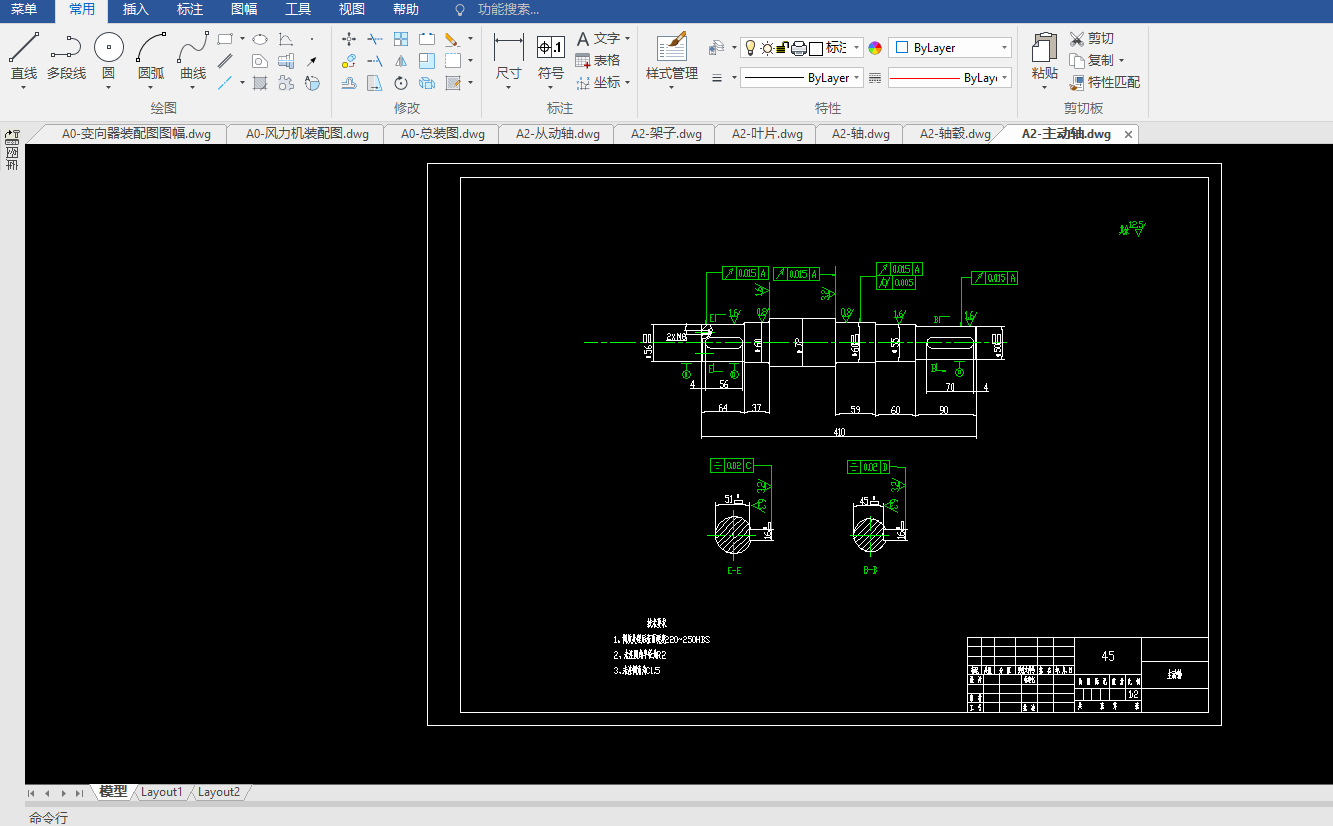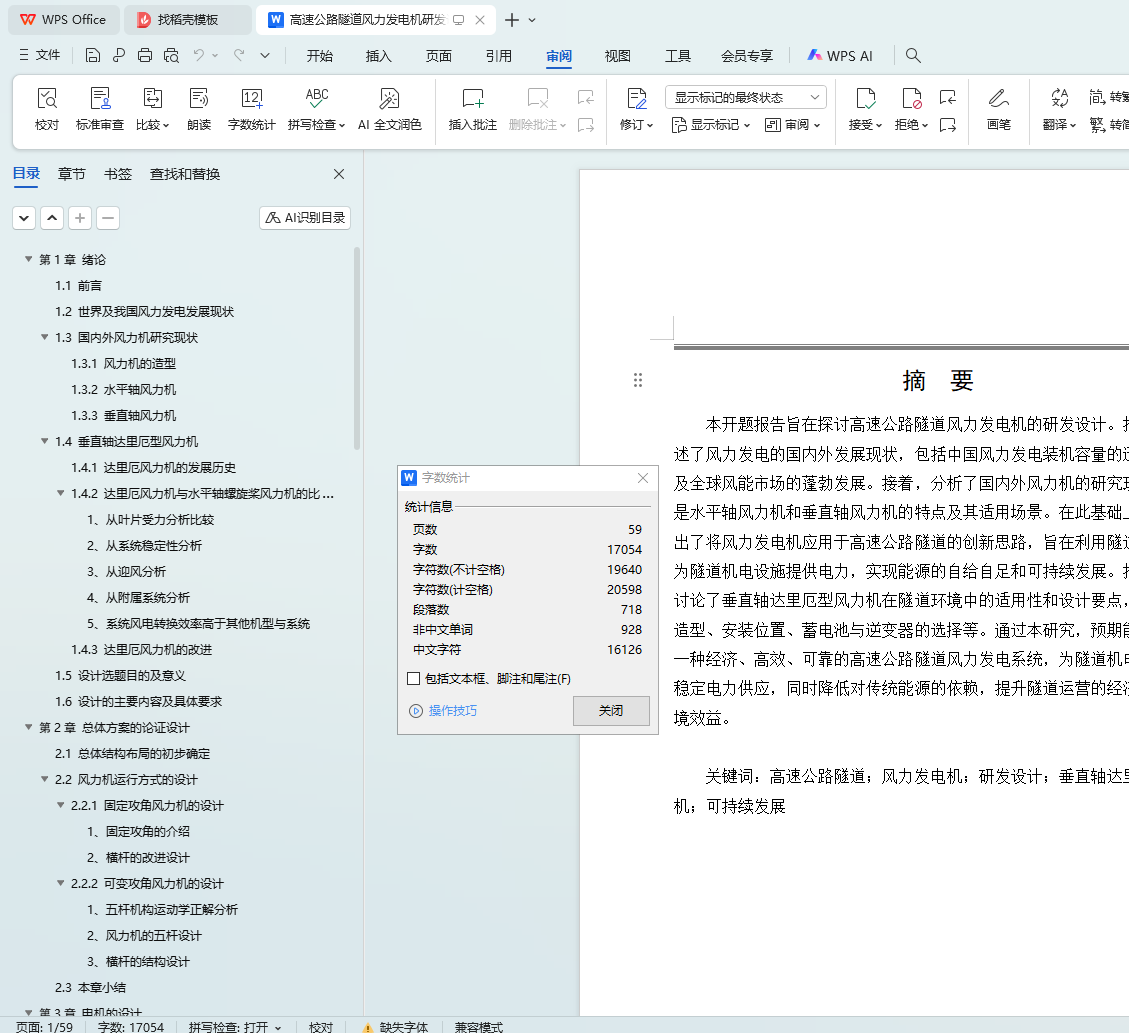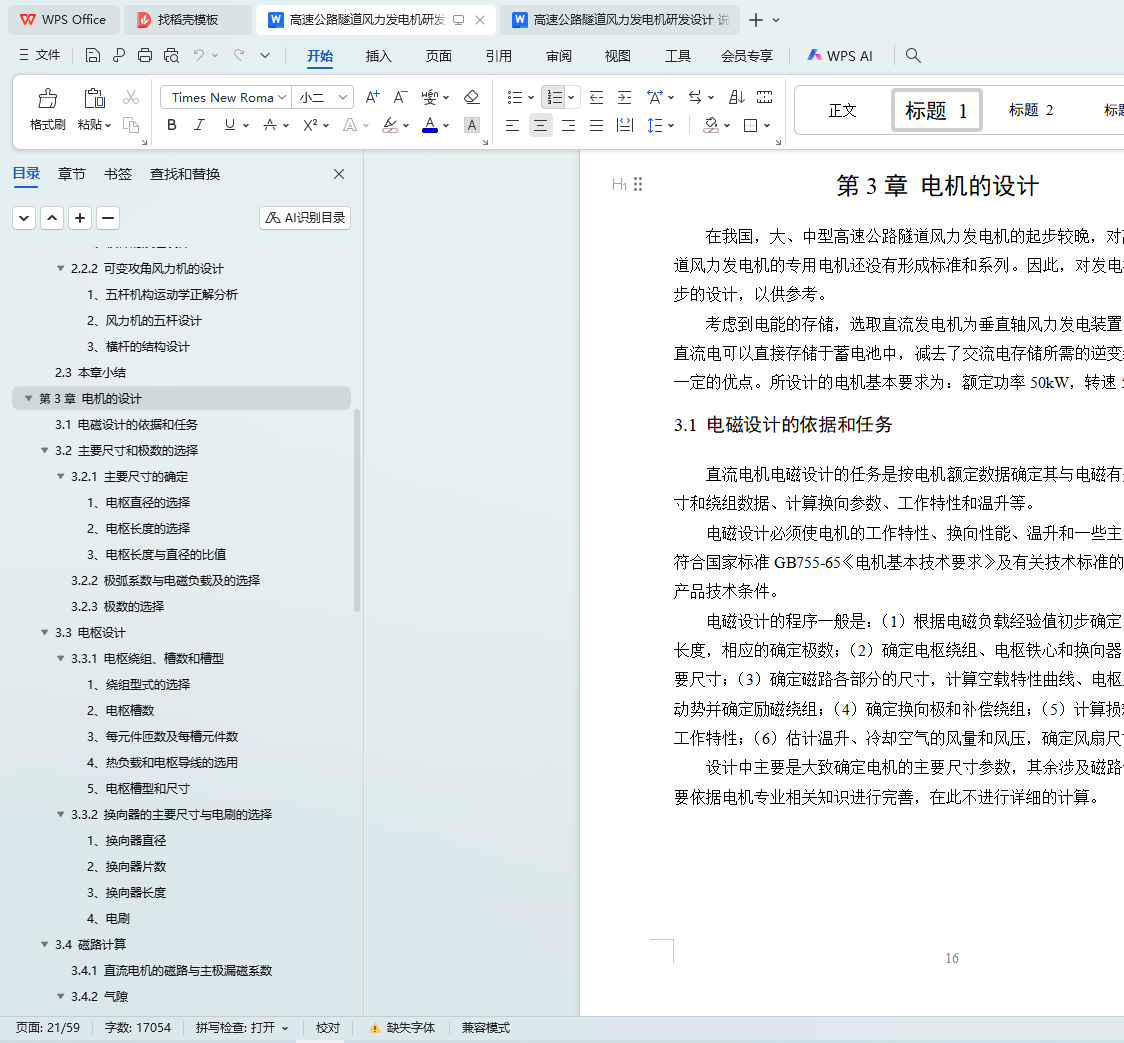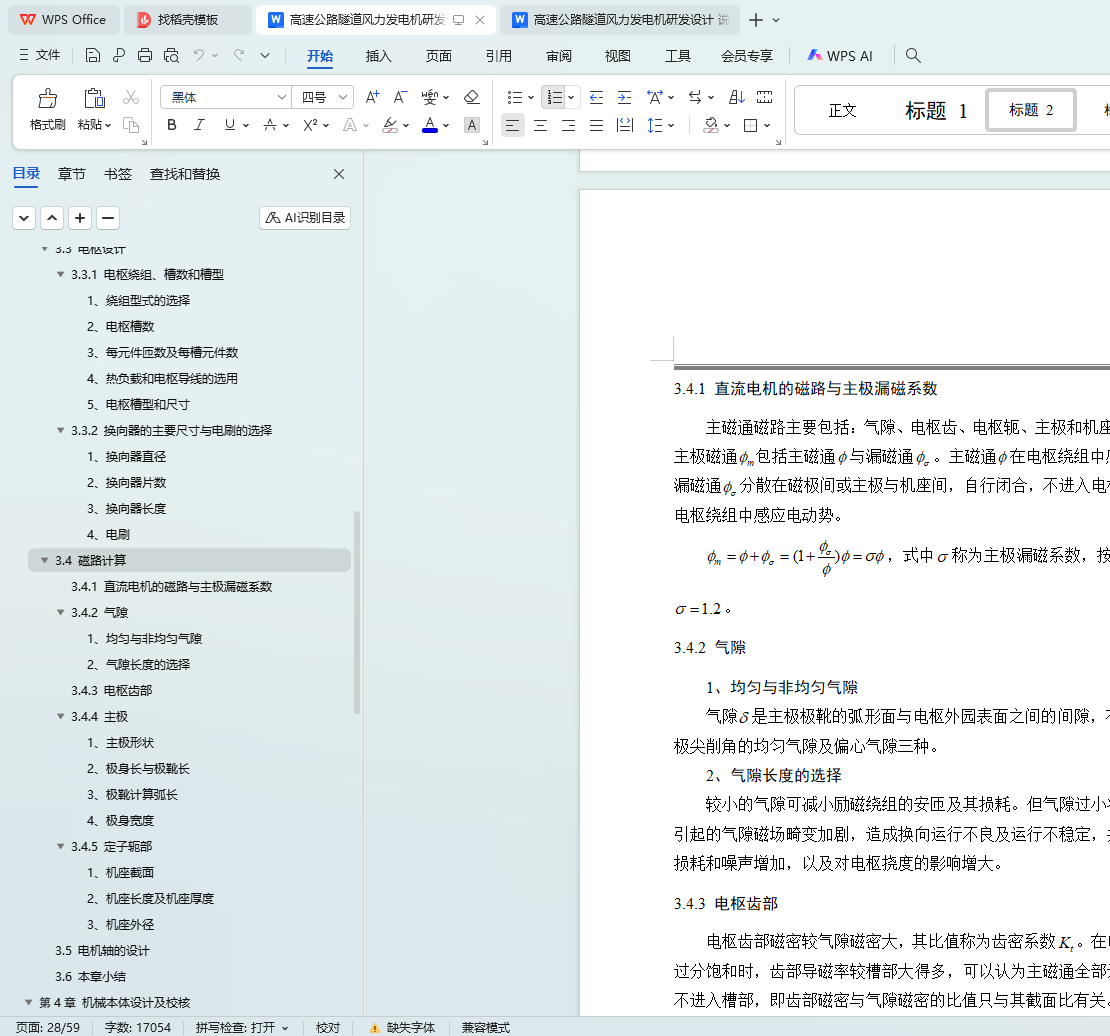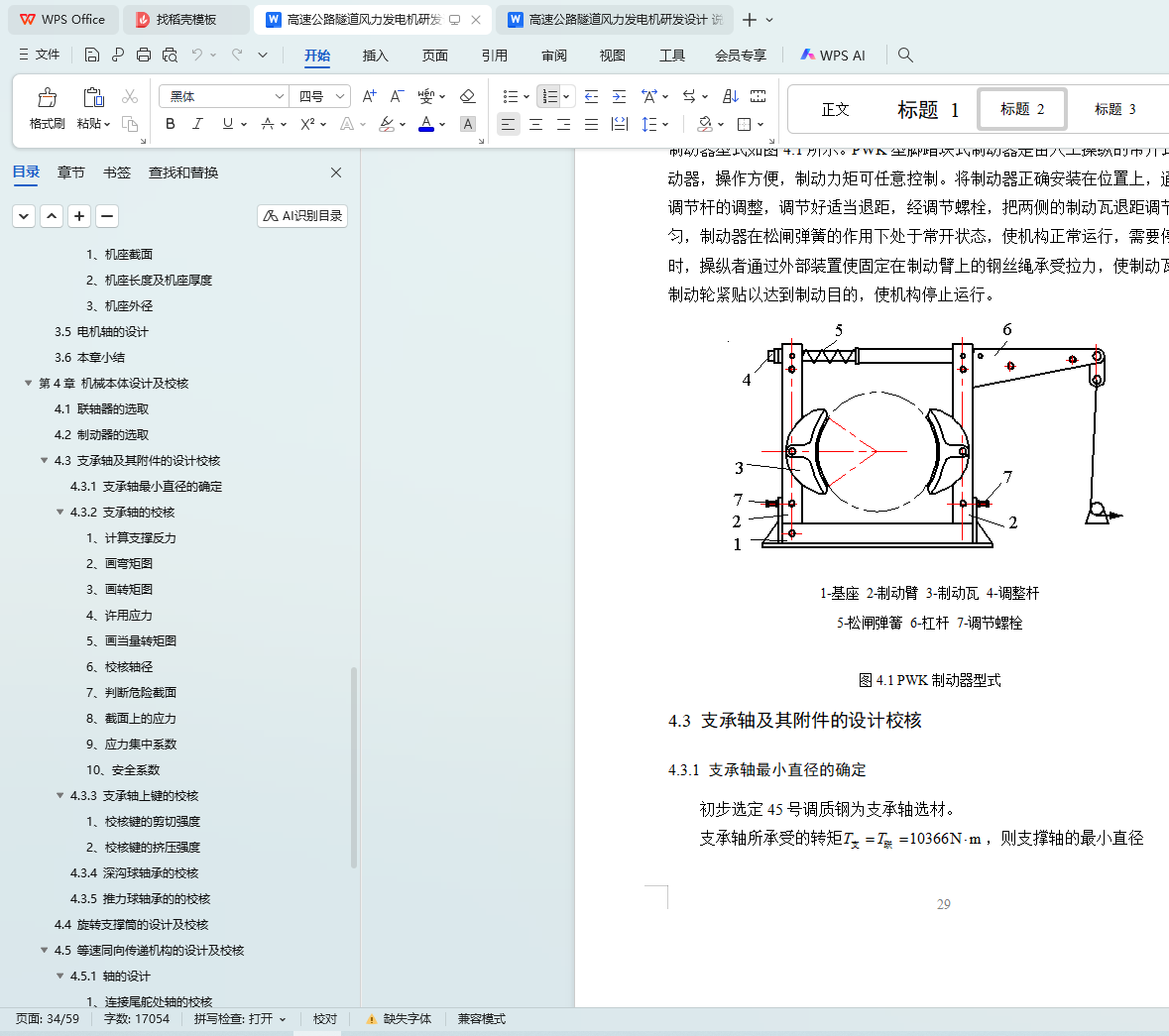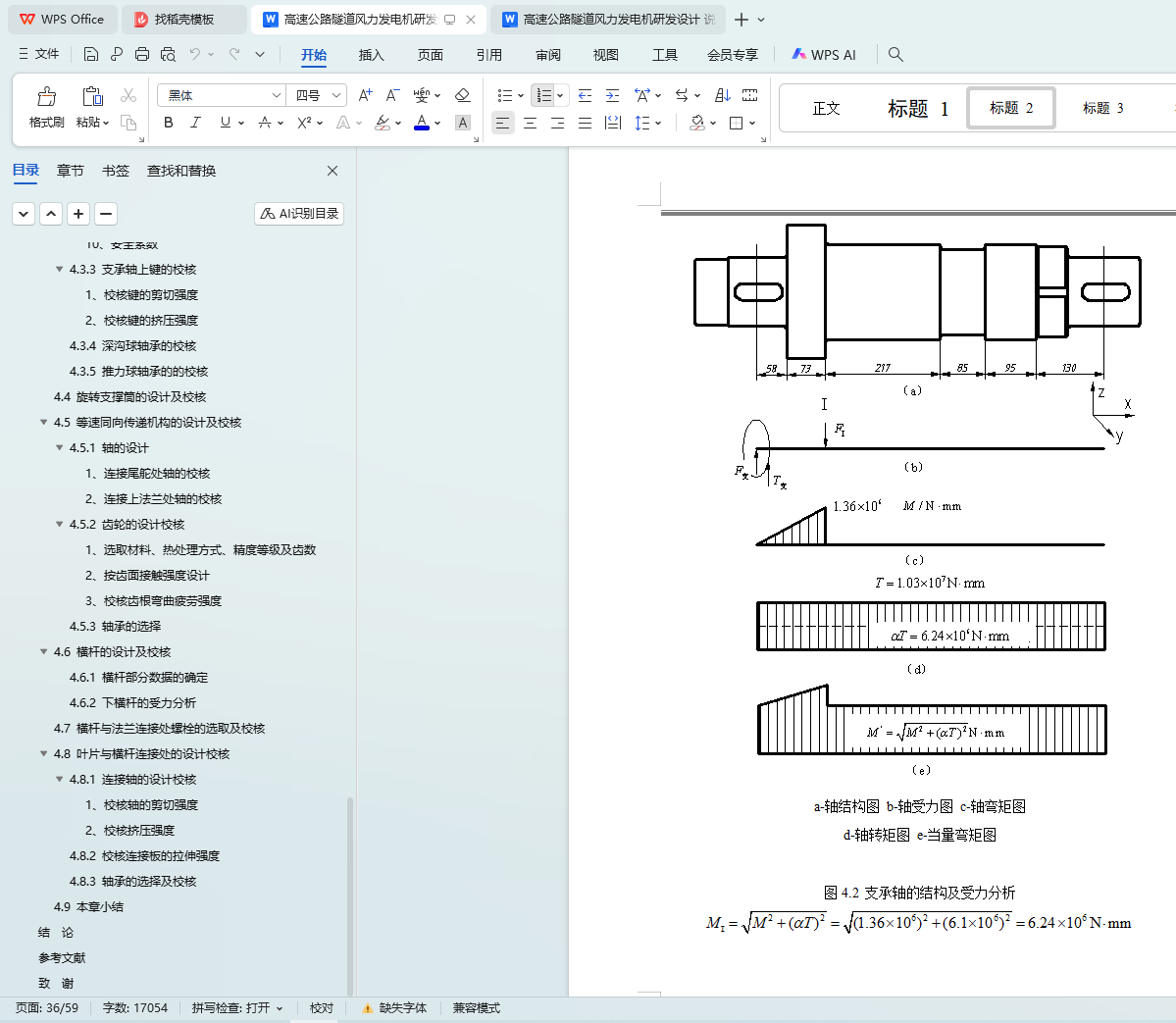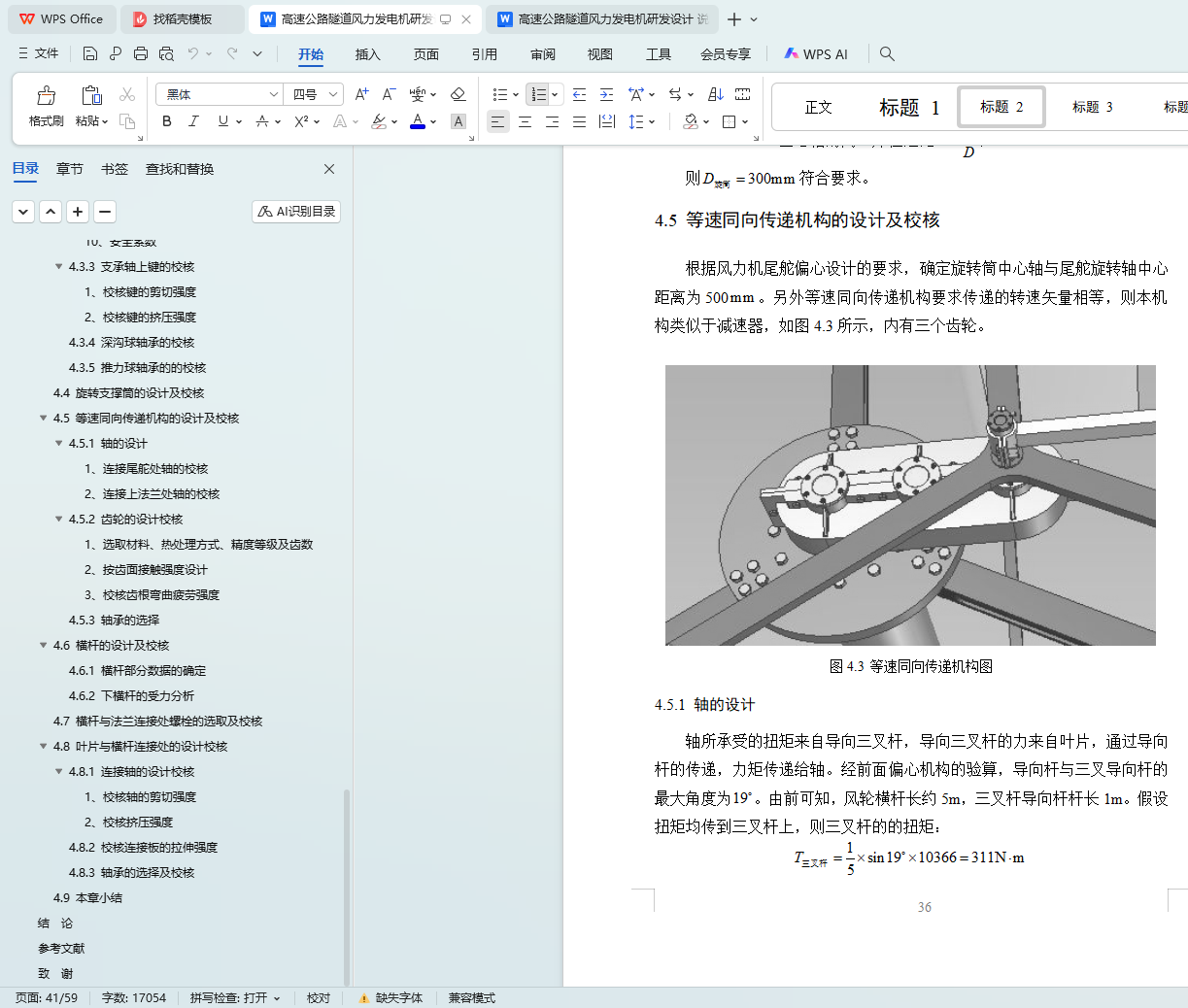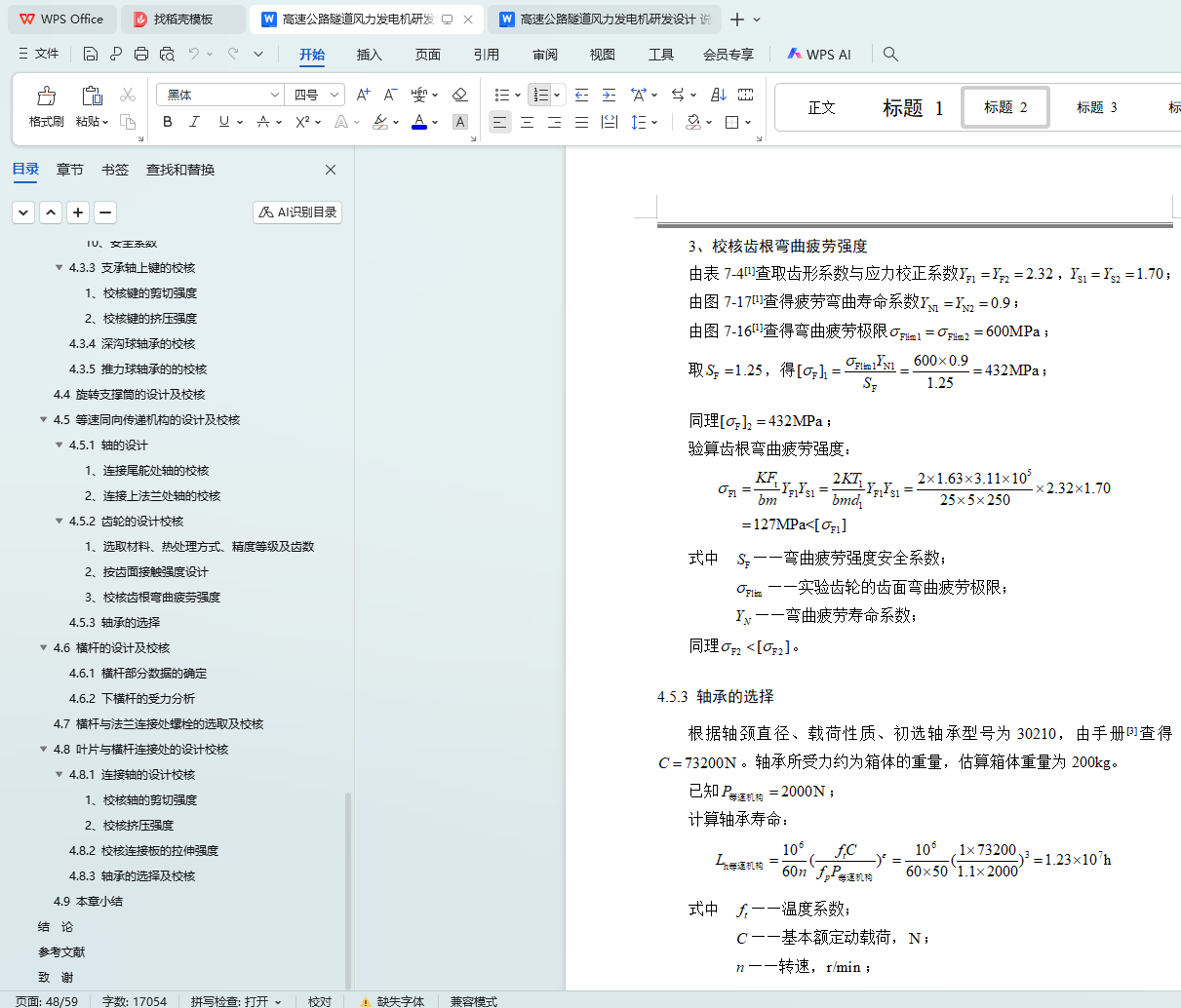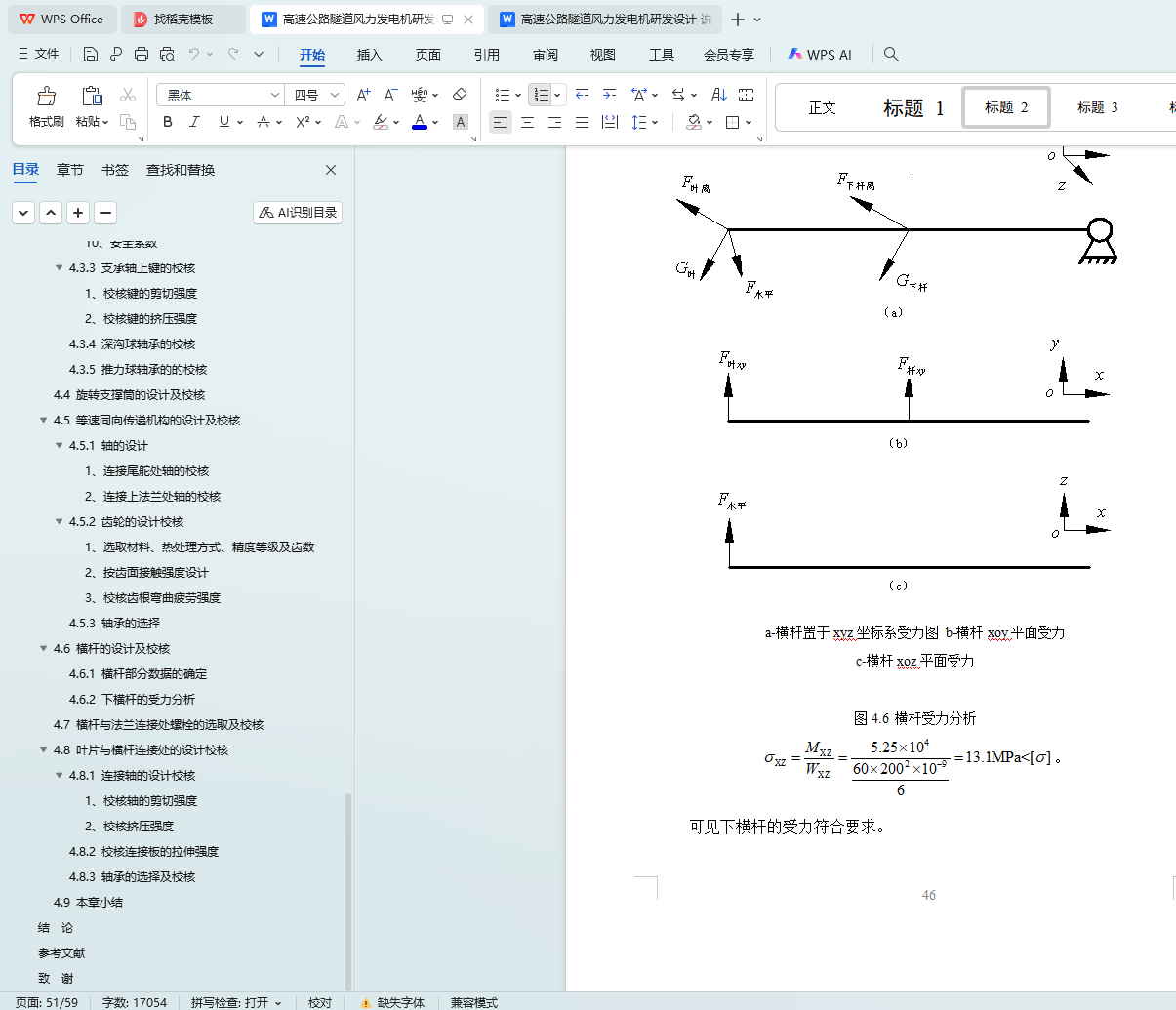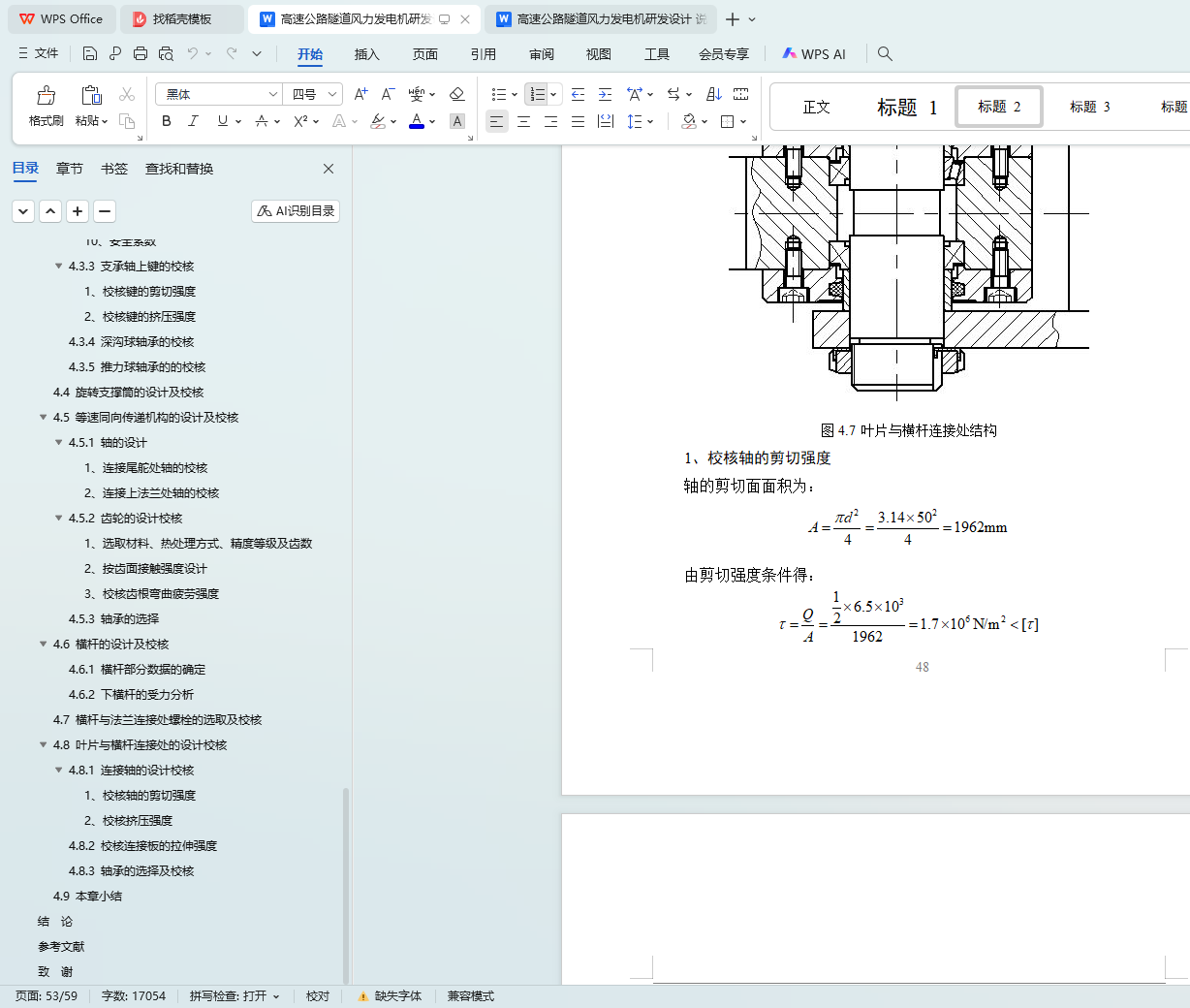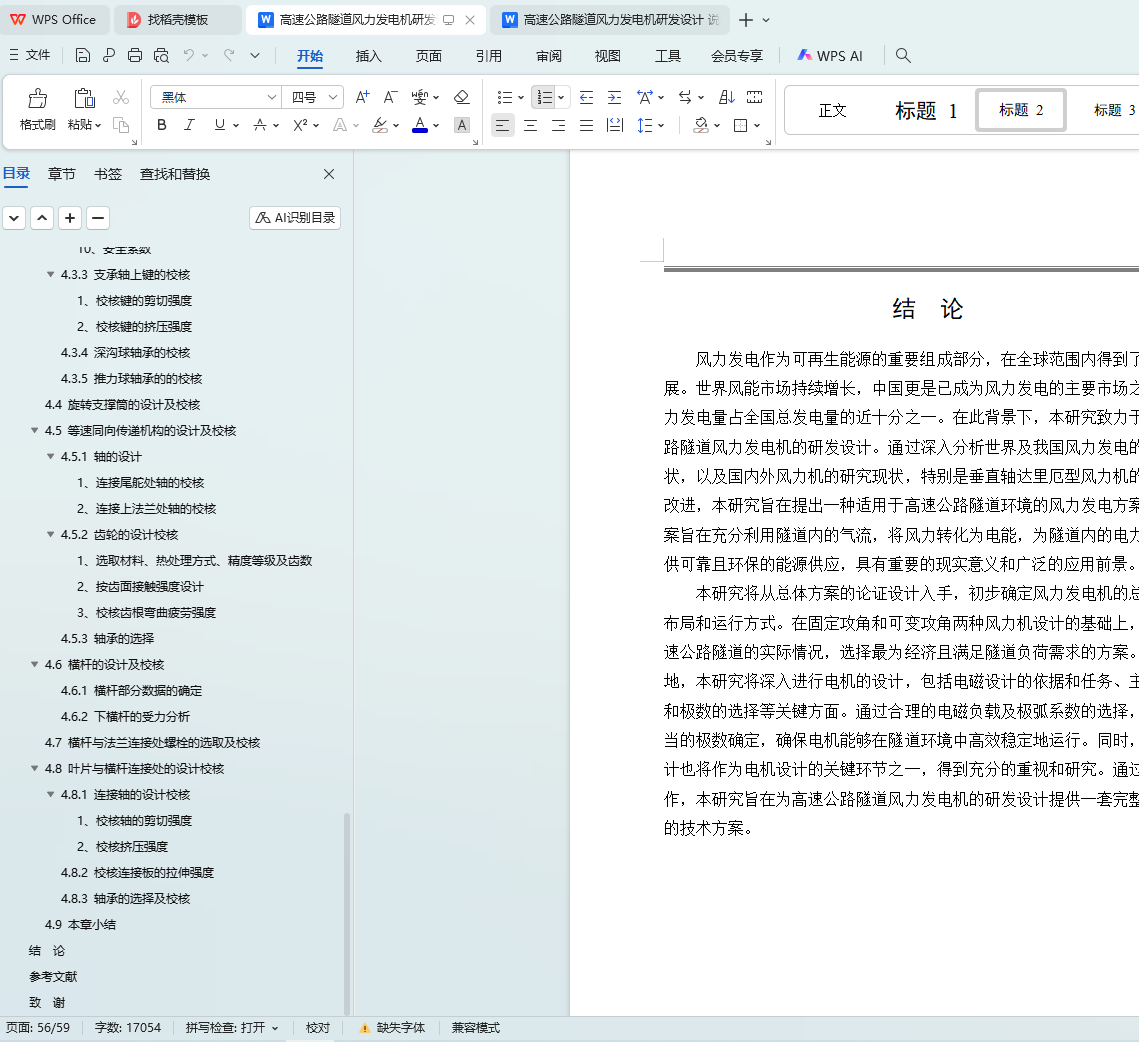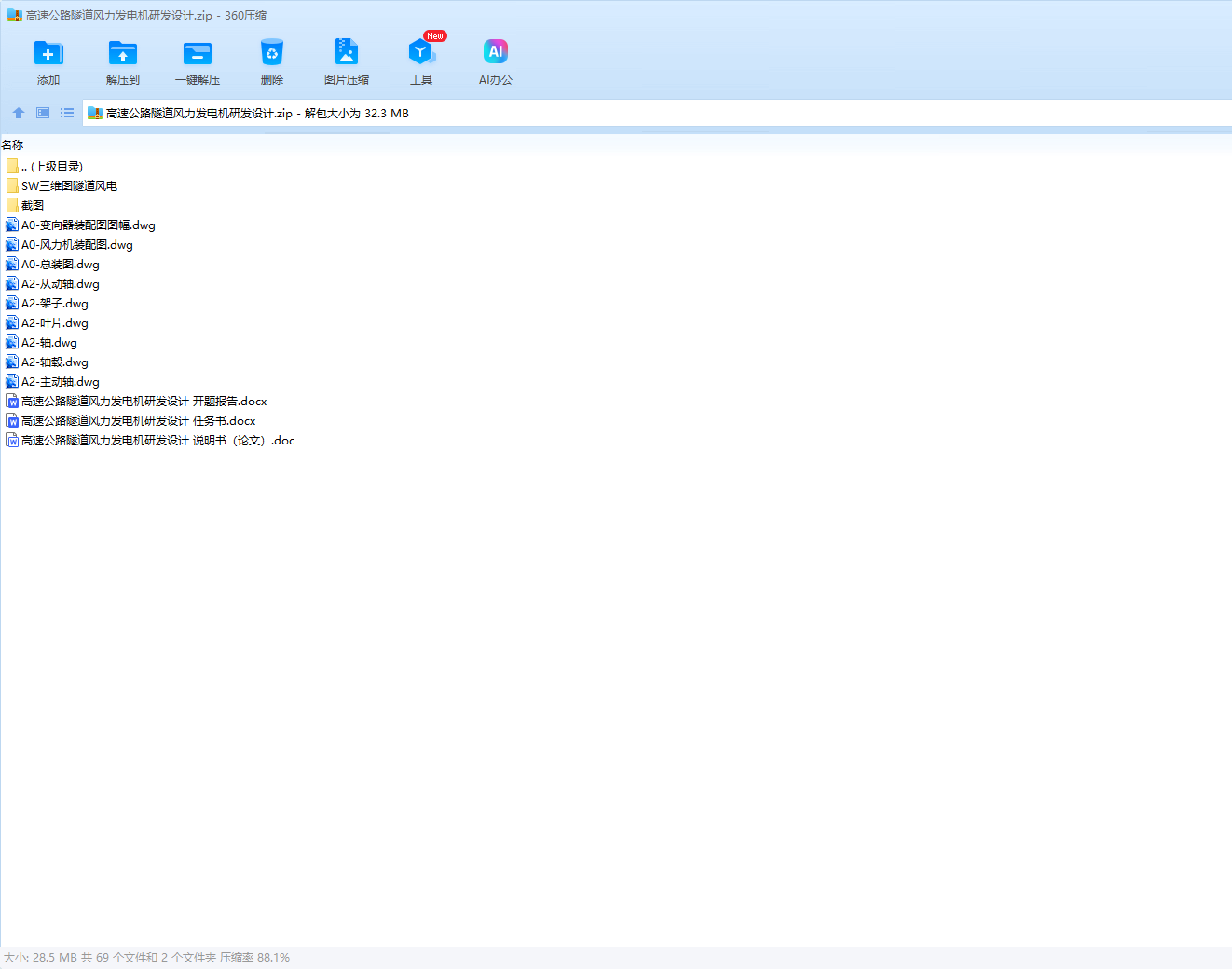摘 要
本开题报告旨在探讨高速公路隧道风力发电机的研发设计。报告首先概述了风力发电的国内外发展现状,包括中国风力发电装机容量的迅速增长以及全球风能市场的蓬勃发展。接着,分析了国内外风力机的研究现状,特别是水平轴风力机和垂直轴风力机的特点及其适用场景。在此基础上,报告提出了将风力发电机应用于高速公路隧道的创新思路,旨在利用隧道内的气流为隧道机电设施提供电力,实现能源的自给自足和可持续发展。报告还重点讨论了垂直轴达里厄型风力机在隧道环境中的适用性和设计要点,包括叶轮造型、安装位置、蓄电池与逆变器的选择等。通过本研究,预期能够开发出一种经济、高效、可靠的高速公路隧道风力发电系统,为隧道机电设施提供稳定电力供应,同时降低对传统能源的依赖,提升隧道运营的经济效益和环境效益。
关键词:高速公路隧道;风力发电机;研发设计;垂直轴达里厄型风力机;可持续发展
ABSTRACT
This opening report aims to discuss the development and design of highway tunnel wind turbine. The report begins with an overview of wind power development both at home and abroad, including the rapid growth of installed wind power capacity in China and the booming global wind energy market. Then, the research status of wind turbines at home and abroad, especially the characteristics and applicable scenarios of horizontal and vertical axis are analyzed. On this basis, the report proposes an innovative idea of applying wind turbines to highway tunnels, aiming to use the air flow in the tunnel to provide power to the tunnel electromechanical facilities, to achieve self-sufficient energy and sustainable development. The report also focuses on the applicability and design points of the vertical axis Dali-type wind turbine in the tunnel environment, including the impeller modeling, installation position, the selection of battery and inverter, etc. Through this study, it is expected that an economical, efficient and reliable highway tunnel wind power system can provide stable power supply for tunnel electromechanical facilities, while reducing the dependence on traditional energy, and improve the economic and environmental benefits of tunnel operation.
Key words: highway tunnel; wind turbine; development design; vertical axis wind turbine; sustainable development
目 录
第1章 绪论
1.1 前言
1.2 世界及我国风力发电发展现状
1.3 国内外风力机研究现状
1.3.1 风力机的造型
1.3.2 水平轴风力机
1.3.3 垂直轴风力机
1.4 垂直轴达里厄型风力机
1.4.1 达里厄风力机的发展历史
1.4.2 达里厄风力机与水平轴螺旋桨风力机的比较
1.4.3 达里厄风力机的改进
1.5 设计选题目的及意义
1.6 设计的主要内容及具体要求
第2章 总体方案的论证设计
2.1 总体结构布局的初步确定
2.2 风力机运行方式的设计
2.2.1 固定攻角风力机的设计
2.2.2 可变攻角风力机的设计
2.3 本章小结
第3章 电机的设计
3.1 电磁设计的依据和任务
3.2 主要尺寸和极数的选择
3.2.1 主要尺寸的确定
3.2.2 极弧系数 与电磁负载
与电磁负载 及
及 的选择
的选择
3.2.3 极数的选择
3.3 电枢设计
3.3.1 电枢绕组、槽数和槽型
3.3.2 换向器的主要尺寸与电刷的选择
3.4 磁路计算
3.4.1 直流电机的磁路与主极漏磁系数
3.4.2 气隙
3.4.3 电枢齿部
3.4.4 主极
3.4.5 定子轭部
3.5 电机轴的设计
3.6 本章小结
第4章 机械本体设计及校核
4.1 联轴器的选取
4.2 制动器的选取
4.3 支承轴及其附件的设计校核
4.3.1 支承轴最小直径的确定
4.3.2 支承轴的校核
4.3.3 支承轴上键的校核
4.3.4 深沟球轴承的校核
4.3.5 推力球轴承的的校核
4.4 旋转支撑筒的设计及校核
4.5 等速同向传递机构的设计及校核
4.5.1 轴的设计
4.5.2 齿轮的设计校核
4.5.3 轴承的选择
4.6 横杆的设计及校核
4.6.1 横杆部分数据的确定
4.6.2 下横杆的受力分析
4.7 横杆与法兰连接处螺栓的选取及校核
4.8 叶片与横杆连接处的设计校核
4.8.1 连接轴的设计校核
4.8.2 校核连接板的拉伸强度
4.8.3 轴承的选择及校核
4.9 本章小结
结论
参考文献
致谢
